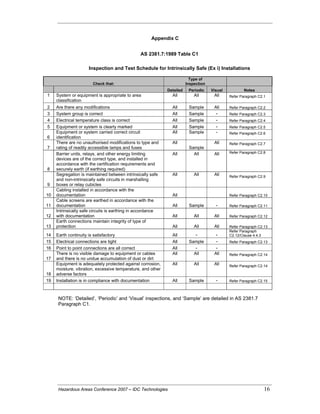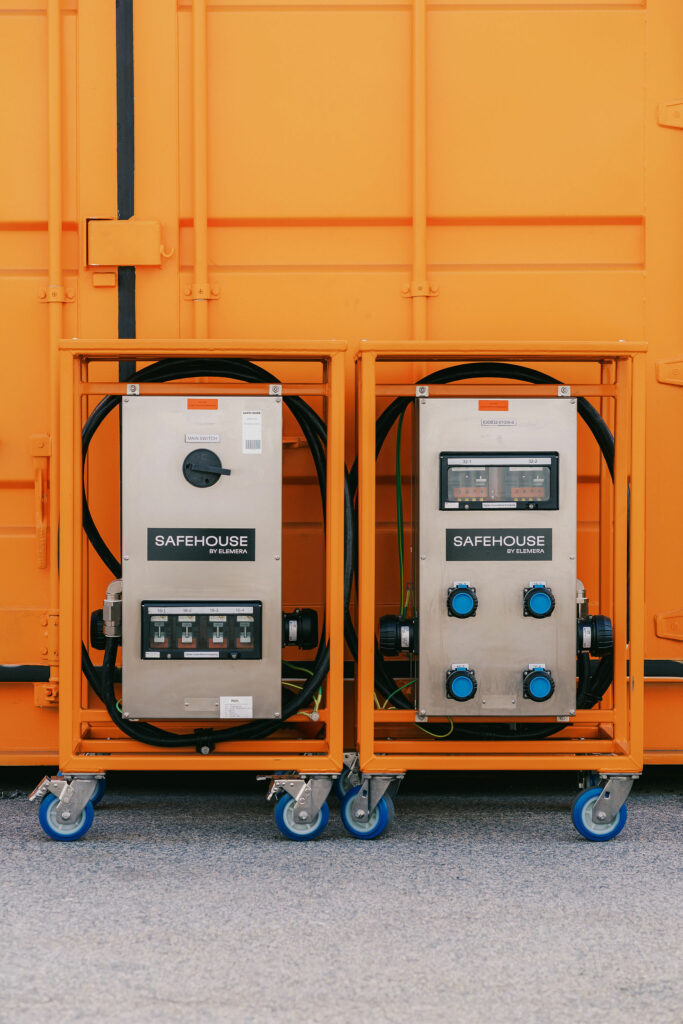The Best Strategy To Use For Roar Solutions
The Best Strategy To Use For Roar Solutions
Blog Article
The 6-Second Trick For Roar Solutions
Table of ContentsThe 30-Second Trick For Roar SolutionsGetting The Roar Solutions To WorkExcitement About Roar Solutions
In such an atmosphere a fire or surge is feasible when three standard problems are satisfied. This is commonly referred to as the "dangerous area" or "combustion" triangle. In order to protect installments from a possible surge a technique of analysing and categorizing a potentially hazardous location is required. The objective of this is to make sure the appropriate choice and installation of devices to ultimately prevent a surge and to guarantee security of life.
(https://www.cybo.com/AU-biz/roar-solutions)
No tools must be mounted where the surface temperature of the devices is higher than the ignition temperature level of the offered risk. Below are some usual dirt unsafe and their minimum ignition temperature. Coal Dust 380C 225C Polythene 420C (thaws) Methyl Cellulose 420C 320C Starch 460C 435C Flour 490C 340C Sugar 490C 460C Grain Dust 510C 300C Phenolic Resin 530C > 450C Aluminium 590C > 450C PVC 700C > 450C Residue 810C 570C The likelihood of the hazard existing in a focus high adequate to trigger an ignition will certainly differ from area to place.
In order to classify this danger a setup is split into areas of risk depending upon the quantity of time the unsafe is present. These locations are referred to as Areas. For gases and vapours and dirts and fibers there are 3 zones. Zone 0 Area 20 A hazardous environment is extremely most likely to be existing and might be existing for long durations of time (> 1000 hours annually) or perhaps continuously Area 1 Zone 21 A dangerous environment is possible yet not likely to be present for extended periods of time (> 10 450 C [842 F] A category of T6 means the minimum ignition temperature is > 85 C [185 F] Hazardous location electrical equipment possibly created for use in higher ambient temperature levels. This would certainly suggested on the rating plate e.g. EExe II C T3 Ta + 60C( This means at 60C ambient T3 will not be exceeded) T1 T1, T2, T3, T4, T5, T6 T2 T2, T3, T4, T5, T6 T3 T3, T4, T5, T6 T4 T4, T5, T6 T5 T5, T6 T6 T6 A T Class ranking of T1 means the maximum surface area temperature generated by the tool at 40 C is 450 C. Assuming the connected T Course and Temperature ranking for the equipment are appropriate for the location, you can always make use of a tool with a much more strict Department score than needed for the location. There isn't a clear solution to this inquiry regrettably. It actually does depend on the sort of devices and what repairs require to be executed. Equipment with particular examination procedures that can't be carried out in the area in order to achieve/maintain 3rd party rating. Have to come back to the manufacturing facility if it is before the equipment's service. Area Repair Work By Authorised Employee: Complex screening may not be called for nevertheless certain treatments may need to be followed in order for the devices to preserve its 3rd party ranking. Authorized personnel should be used to perform the job properly Repair service need to be a like for like replacement. New component must be taken into consideration as a direct replacement needing no unique testing of the equipment after the fixing is complete. Each tool with a dangerous ranking need to be evaluated individually. These are outlined at a high level listed below, but also for more in-depth details, please refer straight to the standards.
Roar Solutions Can Be Fun For Everyone
The devices register is a detailed database of tools records that includes a minimum collection of fields to identify each product's location, technical criteria, Ex lover classification, age, and environmental information. The ratio of Detailed to Close evaluations will certainly be determined by the Equipment Threat, which is analyzed based on ignition danger (the chance of a resource of ignition versus the likelihood of a flammable atmosphere )and the hazardous location classification
( Zone 0, 1, or 2). Implementing a durable Risk-Based Assessment( RBI )method is vital for making sure compliance and safety Web Site and security in handling Electric Devices in Hazardous Areas( EEHA).
Roar Solutions Things To Know Before You Buy

In regards to explosive threat, a hazardous location is an atmosphere in which an eruptive ambience exists (or may be anticipated to be present) in quantities that require unique safety measures for the construction, installment and use of equipment. Roar Training Solutions. In this post we check out the difficulties dealt with in the work environment, the danger control measures, and the needed proficiencies to work securely
These materials can, in certain conditions, create explosive environments and these can have significant and awful effects. Many of us are familiar with the fire triangle eliminate any one of the three elements and the fire can not happen, however what does this mean in the context of harmful areas?
In most circumstances, we can do little concerning the levels of oxygen airborne, however we can have significant influence on sources of ignition, as an example electric equipment. Hazardous locations are recorded on the unsafe location category illustration and are recognized on-site by the triangular "EX LOVER" indicator. Below, among various other key details, zones are divided into three kinds depending on the threat, the probability and duration that an eruptive atmosphere will certainly exist; Zone 0 or 20 is regarded one of the most harmful and Zone 2 or 22 is considered the least.
Report this page